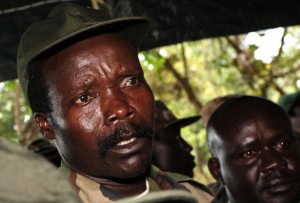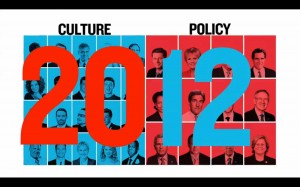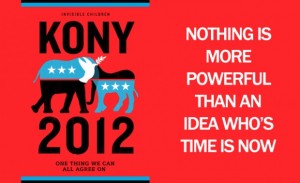If you have access to the Internet, a television, or radio, chances are you have seen the Kony 2012 video or at least heard of the Kony 2012 social media campaign this spring. Crafted by the non-profit organization Invisible Children, Kony 2012 is a 30-minute documentary about Joseph Kony, the leader of the Ugandan guerilla group Lord’s Resistance Army, who has been torturing and kidnapping children to be used as soldiers and committing war crimes for over two decades. An instant viral phenomenon, more than 100 million people had seen Kony 2012 and over 5.4 million people tweeted about the video in the week it went live.
Through social media, Invisible Children’s Kony 2012 campaign had made Joseph Kony famous overnight. The viral video not only compelled viewers to share the video, it had a strong call to action, encouraging supporters to appeal to 20 “culturemakers” like George Clooney, Mark Zuckerberg and Lady Gaga and 20 “policy makers” like Bill Clinton, Mitt Romney and Condoleeza Rice. With all its successes and attention also came increased scrutiny and criticism to the organization including oversimplification and misrepresentation of the situation in Africa and misuse of funds from the organization. To increase matters further, Invisible Children co-founder and Kony 2012 filmmaker Jason Russell experienced a very public breakdown drawing more negative attention to the organization.
Regardless of whether you are a supporter or critic of Invisible Children’s Kony 2012 campaign, it cannot be denied that it accomplished its goals of effecting change and raising awareness of Joseph Kony, striking the emotional chords with millions worldwide. The social media campaign not only influenced millions of people around the globe to act, but also resulted in a resolution in the U.S. Senate to heighten U.S. and regional forces, and efforts to pursue and remove Joseph Kony.
From a marketing and branding perspective, there are also a lot of lessons we can learn from Kony 2012.
- Know your audience and where they are online: Invisible Children targeted young people savvy on social mediums.
- Use key influential to carry your brand message: Invisible Children called millions to target change makers, culture makers and policy makers identified.
- Get your audience moving: A clear call to action and interactive social media campaign kept people engaged and momentum going.
- Beware of the pitfalls: It can be difficult to project the success of a campaign. Have a contingency plan and ensure that your team can adapt quickly and flexibly.
In my opinion, the campaign’s ability to impact and mobilize people through social media to effect change towards a shared goal has never been achieved to this capacity before. The viral hit also demonstrated the impact of a well-crafted story and the importance of storytelling. This is exactly what Invisible Children did in its quest to bring attention to the crimes of Joseph Kony and influence change makers to fight harder for his capture.
If what you’r’e doing matters, then I hope you’ll take the time to tell a story. A story that resonates and a story that can become true. – Seth Godin



